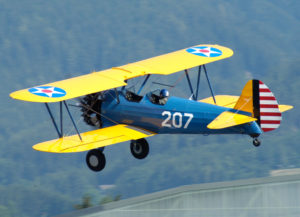Primary flight training was the first phase of pilot training for the Army.

The training was provided by civilian contractors. They trained the student pilots, using Stearman, Ryan and Fairchild trainers owned by the USAAF, but the flight instructors were civilian employees. Each cadet received 60 hours of flight training in nine weeks.
Primary flying training was divided into four standard phases. In the pre-solo phase students became familiar with the general operation of a light aircraft and achieved proficiency in forced landing techniques and in recovering from stalls and spins.
In the second, or intermediate phase, pre-solo work was reviewed, and precision of control was developed by flying standard courses or patterns, known as elementary 8’s, lazy 8’s, pylon 8’s, and chandelles.
The third, or accuracy, phase demanded high proficiency in various types of landing approaches and landings; the fourth, or acrobatic, phase required ability to perform loops, Immelmann turns, slow rolls, half-rolls, and snap rolls.
The ratio of dual to solo hours was flexible within the limitation that a minimum of 40 per cent and a maximum of 50 per cent of the total time was to be dual. Each student in primary was required to make at least 175 landings.29
Below is a Navy flight training film, involving the Stearman trainer.
